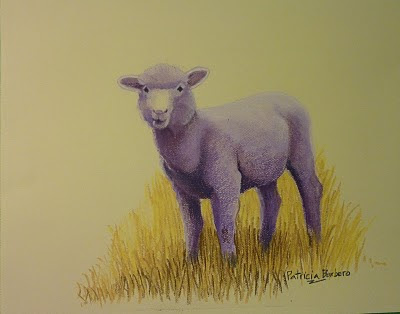
In this piece I started by using complementary colours throughout the whole painting, maintaining the values in the original reference photo (I used a black and white photocopy to help me see the values better).
So, the sky was different shades of orange, as was the water. The building was green, the shadows were yellow.
The white parts of the clouds were... white. White is not a color - it is
light, it has no complementary. Black is not a colour - it is
absence of light, it has no complementary either.
When I finished the complementary underpainting, it looked very "interesting", like a Mars landscape... (a "Marscape"?)
So I went back and applied the "real" colour on top, and voila! we are back on Earth - Peggy's Cove, to be precise.
Using complementary colours as an underpainting to a landscape theme adds luminosity to it.
It is painted on sandpaper with soft pastels and measures 0.3 x 0.46m.
 Meet Harry, a Pig with a Purpose.
Meet Harry, a Pig with a Purpose.


